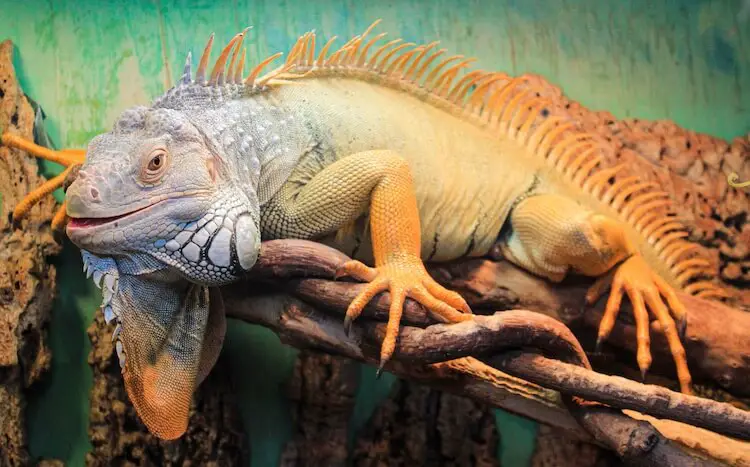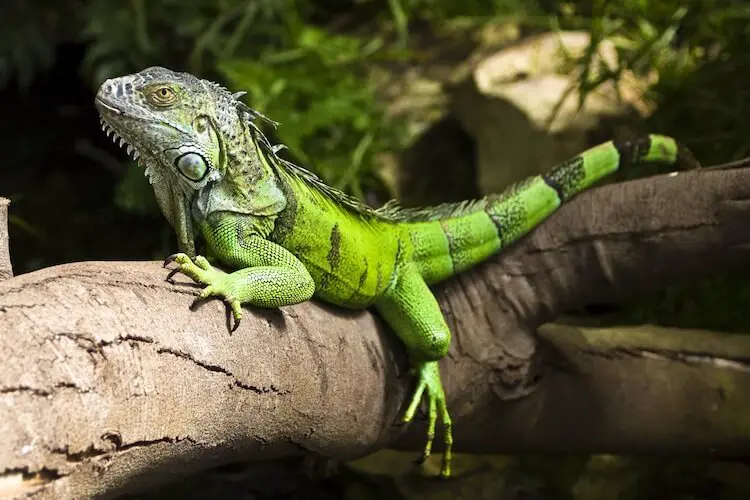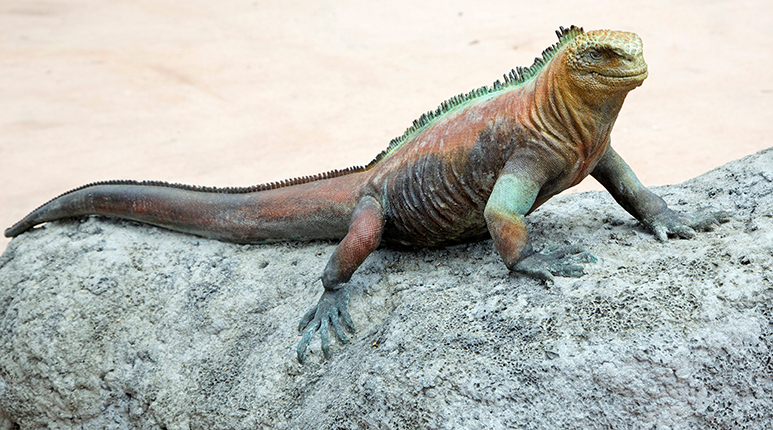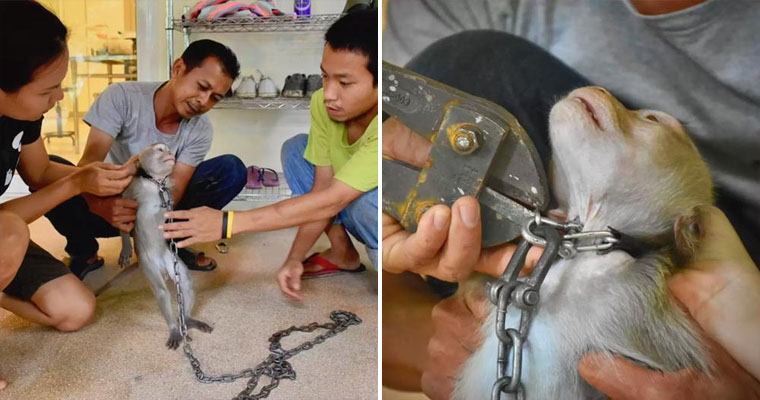Iguanas are cold-blooded, egg-laying animals and are some of the largest lizards found in the Americas. Their size, color, behavior, and unique adaptations vary depending on the species. Some, like the Fiji banded iguana, are bright green with white or light blue bands while others have dull colors. The most abundant and well-known type of iguana is the green iguana (Iguana iguana). Their average size is 6.6 feet, and they weigh up to 11 pounds. Their green color helps camouflage them in undergrowth, and they have a row of spines on their body which function as defense.

Rock iguanas have long, straight tails and short, powerful limbs, which helps them climb trees and limestone formations. They have a flap of skin called a dewlap located in the throat area that helps with temperature regulation. Spiny-tailed iguanas are large omnivorous animals, and black spiny-tailed iguanas are the fastest running lizards, reaching speeds of up to 21 mph.
:max_bytes(150000):strip_icc():format(webp)/iguana2-b554e81fc1834989a715b69d1eb18695.jpg)
Marine iguanas have black coloration to help warm their bodies after swimming in cold ocean waters. They do not have gills, so they can not breath underwater. However, marine iguanas can hold their breathe underwater for up to 45 minutes. Their flat tails help them swim in a snake-like motion, allowing them to quickly graze on algae for a few minutes before returning to the surface. Their long claws allow them to latch onto the bottom while grazing. Due to their diet and large quantities of salt water consumed, marine iguanas have developed the ability to sneeze excess salt through their salt glands.
Habitat and Distribution
Depending on the species, iguanas live in a variety of habitats including deserts, rocky regions, swamps, rainforests, and lowlands. Green iguanas are found throughout Mexico down to Central America, the Caribbean Islands, and southern Brazil. The iguana species inhabiting the Caribbean islands are collectively known as the rock iguanas. Desert iguanas are found in the southwestern U.S. and Mexico, while two genera of marine iguanas inhabit the Galapagos Islands.
Diet and Behavior
Most iguana species are herbivores, eating young leaves, fruits, and flowers. Some eat insects like the wax worm, while marine iguanas dive into the ocean to harvest algae from plants. Some species house bacteria in their digestive systems which allow them to ferment the plant material they eat.
Green iguanas are omnivores when they are young but shift to almost entirely herbivorous diets as adults. Young green iguanas eat mostly insects and snails and shift to eating fruits, flowers, and leaves as adults. They have sharp teeth that allow them to shred leaves. Green iguanas also live high in the tree canopy and inhabit higher altitudes as they grow older. Another interesting fact about iguanas is that they can detach their tails when in danger and regrow them later.
Reproduction and Offspring
Iguanas generally reach the age of sexual maturity at 2 to 3 years and can lay anywhere from 5 to 40 eggs per clutch depending on the species. For green iguanas, males establish mating pairs with females during the rainy season and leave the tree tops to fertilize the eggs during the beginning of the dry season.
Most iguana species dig a burrow in sunny areas to lay their eggs inside and cover them. The ideal temperature range for incubation of these eggs is between 77 to 89 degrees Fahrenheit. After 65 to 115 days, depending on the species, these young hatch at the same time. After digging out of their burrows, the newly hatched iguanas begin their lives on their own.
There are roughly 35 living species of iguanas. The most abundant species is the Common or Green iguana (Iguana iguana). Iguanas are grouped into 9 categories based on their habitats and adaptations: the Galapagos marine iguanas, Fiji iguanas, Galapagos land iguanas, thorntail iguanas, spiny-tailed iguanas, rock iguanas, desert iguanas, green iguanas, and chuckwallas.
Threats
The Fiji iguanas are an endangered species, with the Fiji crested iguana listed as critically endangered. The biggest factor in the decreasing numbers of Fiji iguanas are predation by feral cats (Felis catus) and the black rat (Rattus rattus) invasive species. Additionally, crested iguanas are critically endangered due to the rapid decrease in their habitat of dry healthy forests in the Fiji Islands. This habitat reduction is due to clearing, burning, and conversion of forests to farmlands.
Conservation Status
The green iguana is designated as least concern according to the International Union for Conservation of Nature (IUCN). All species of the Fiji iguanas group are designated as endangered according to the IUCN, with the Fiji crested iguana (Brachylophus vitiensis) listed as critically endangered.
Iguanas and Humans
Green iguanas are the most common reptile pets in the U.S. However, because they are hard to care for, many of these pets die within the first year. In Central and South America, green iguanas are bred on farms and eaten by people. Their eggs are considered a delicacy, often referred to as the “chicken of the tree.”
Source: https://www.thoughtco.com





